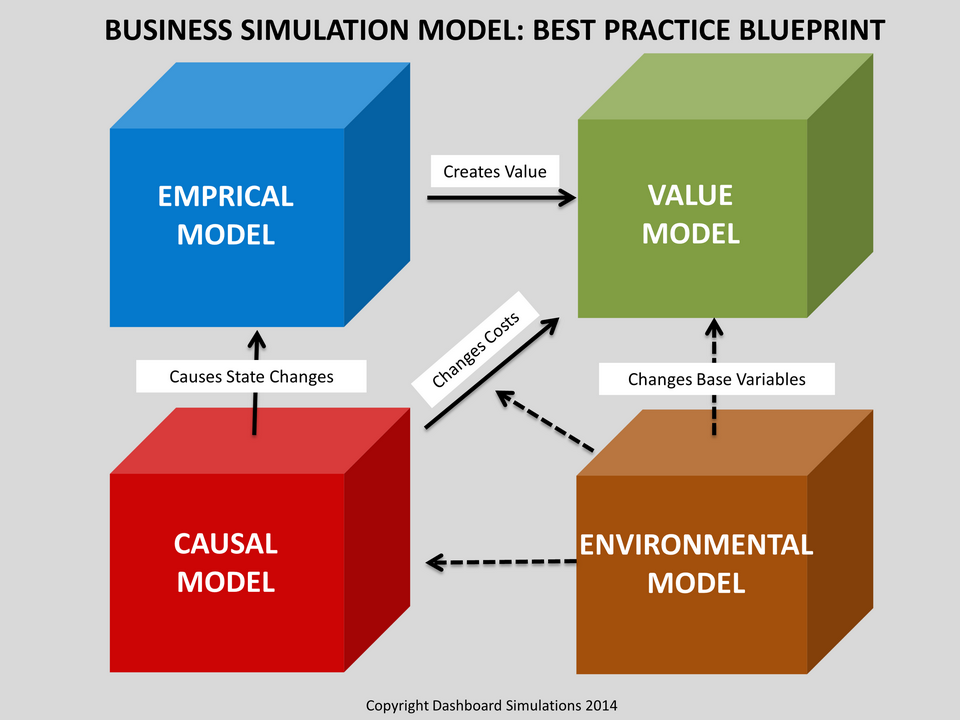
The secret to designing verifiable, re-usable, maintainable business simulation models is not to design a single complex "black box" model but rather 4 distinct but interlinked sub-models with a well-defined interface between each of them.
I call the 4 sub-models:
- The Empirical Model
- The Value Model
- The Causal Model
- The Environmental Model
Let's quickly look at each of the 4 sub-models in turn.
1. The Empirical Model
This is the underpinning verifiable model of the part of the business under consideration. It should only cover the central entities of the organisation (aka “the main chain”) such as customers, patients or students and the transitions between their different states. For example, different customer loyalty levels and the transitions between them. This model should be objective and independently verifiable.
2. The Value Model
This captures the value produced, usually but not always, in money terms when key entities (customers, users, orders, staff ...) change state in the Empirical Model. For example, how does the monthly average basket size and visit frequency of a “loyal” customer compare with that of an “occasional” customer. The Value model should also cover the cost side of the enterprise so that profit can be calculated. Note value is not always monetary, for example, non-commercial organisations such as schools or hospitals. This model should be also be objective and independently verifiable.
3. The Causal Model
This covers the main decisions users of the simulation will make and how they relate to each other and the impacts they have on the states in the Empirical Model. Note that the causal model will impact both the revenue and cost side of the Value model. The revenues will be indirectly impacted through the transitions decisions cause in the Empirical model and the costs directly through the costs associated with the resourcing of these decisions. This model will be subjective but based on real life experience of one or more subject matter experts (SME).
4. The Environmental Model
This defines the external and internal environments and how they will change during the life of the simulation. External events (shocks or good news) will be outside the simulation players control and have to be reacted to. Internal events can be self-inflicted through poor player decision-making or can be undiscovered surprises like external events. This model will be also subjective but based on real life experience of one or more subject matter experts (SME).
If you follow this blueprint then your simulation models will be easier to change, lend themselves to reuse and probably most important of all can be verified and calibrated to the satisfaction of external subject matter experts in the organisations who are relying on them.